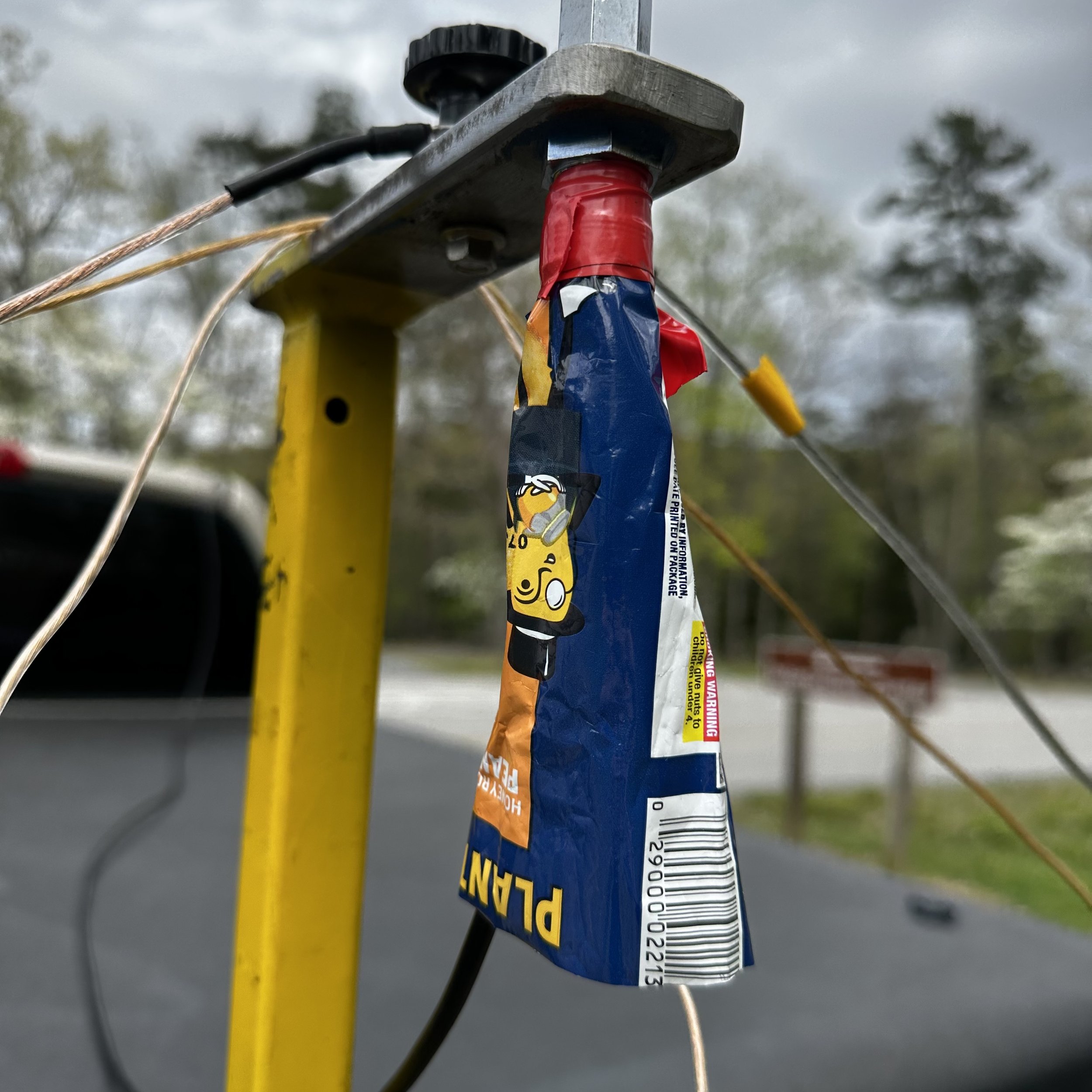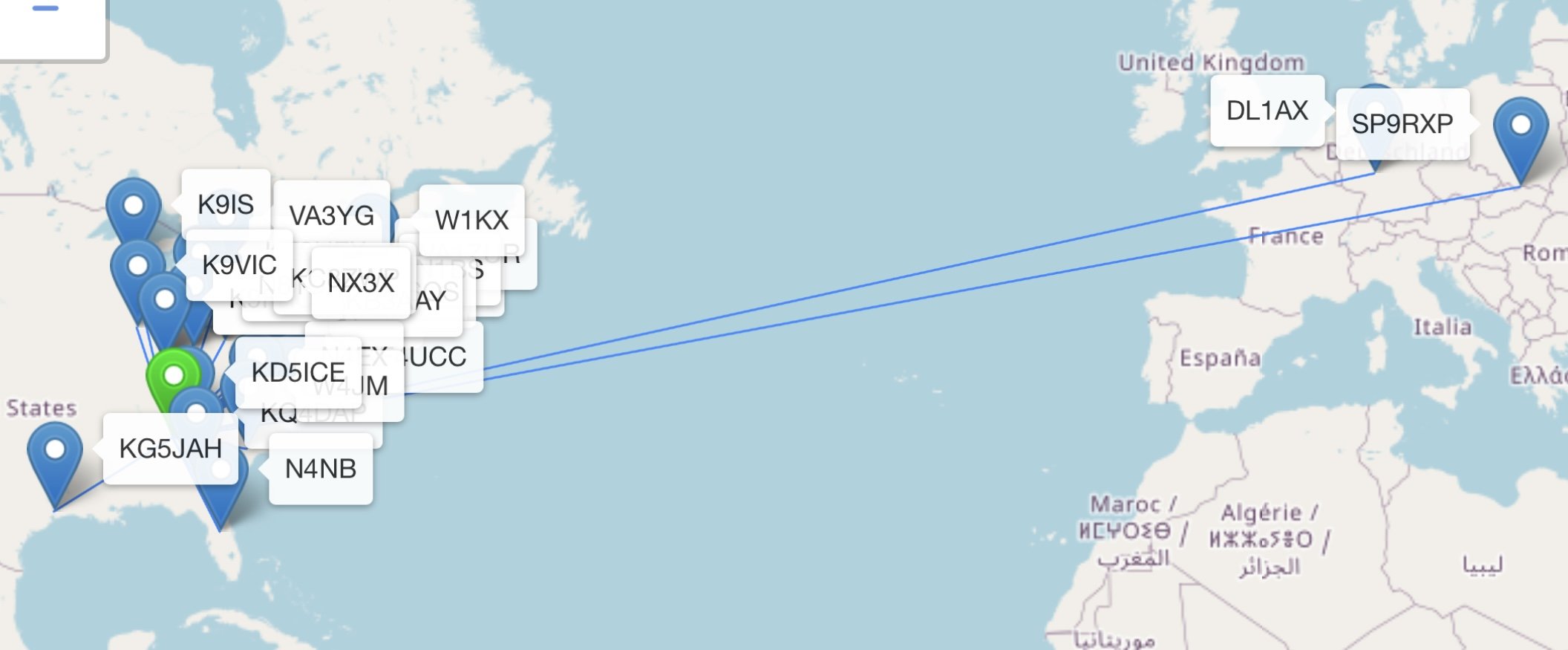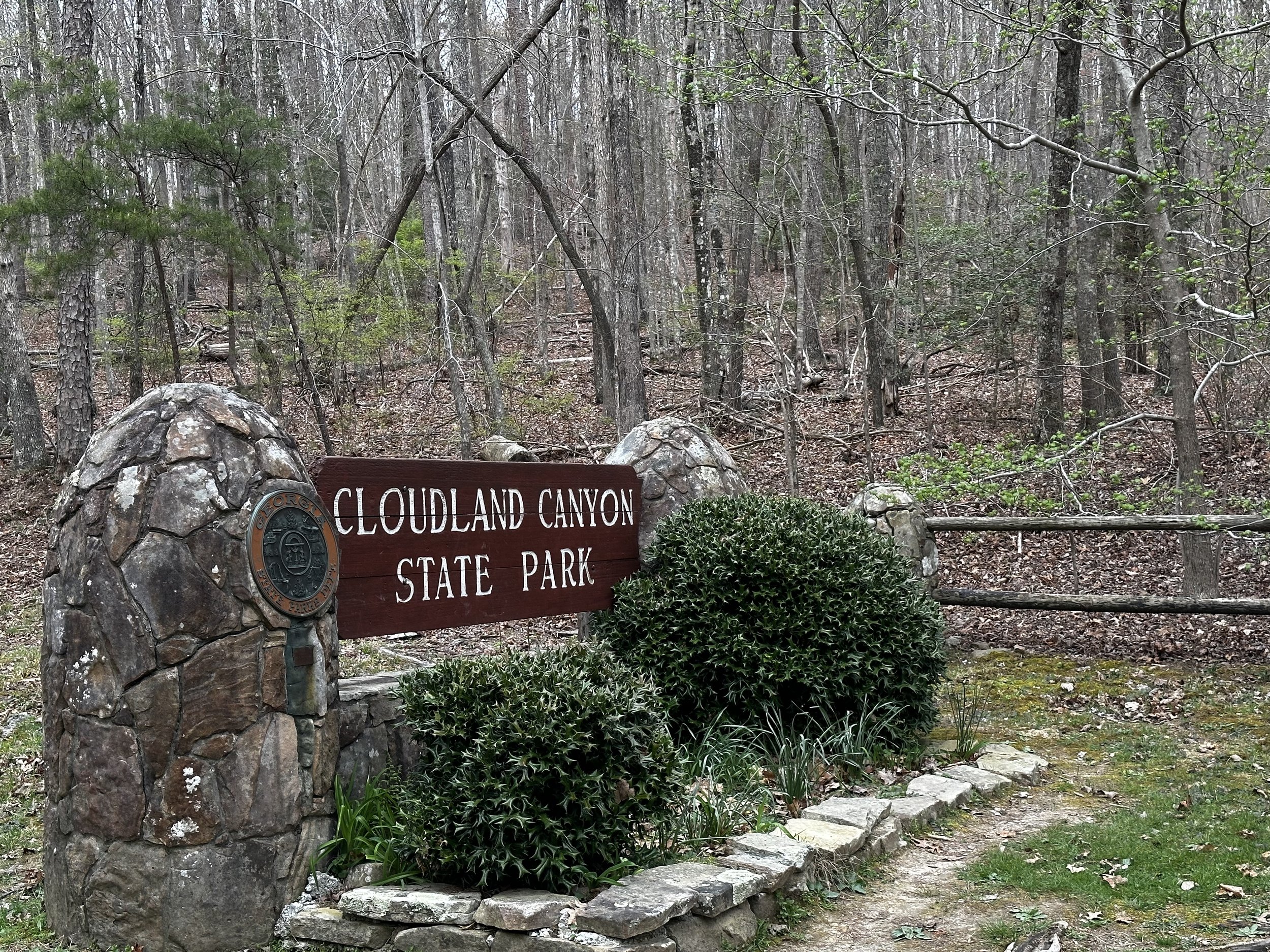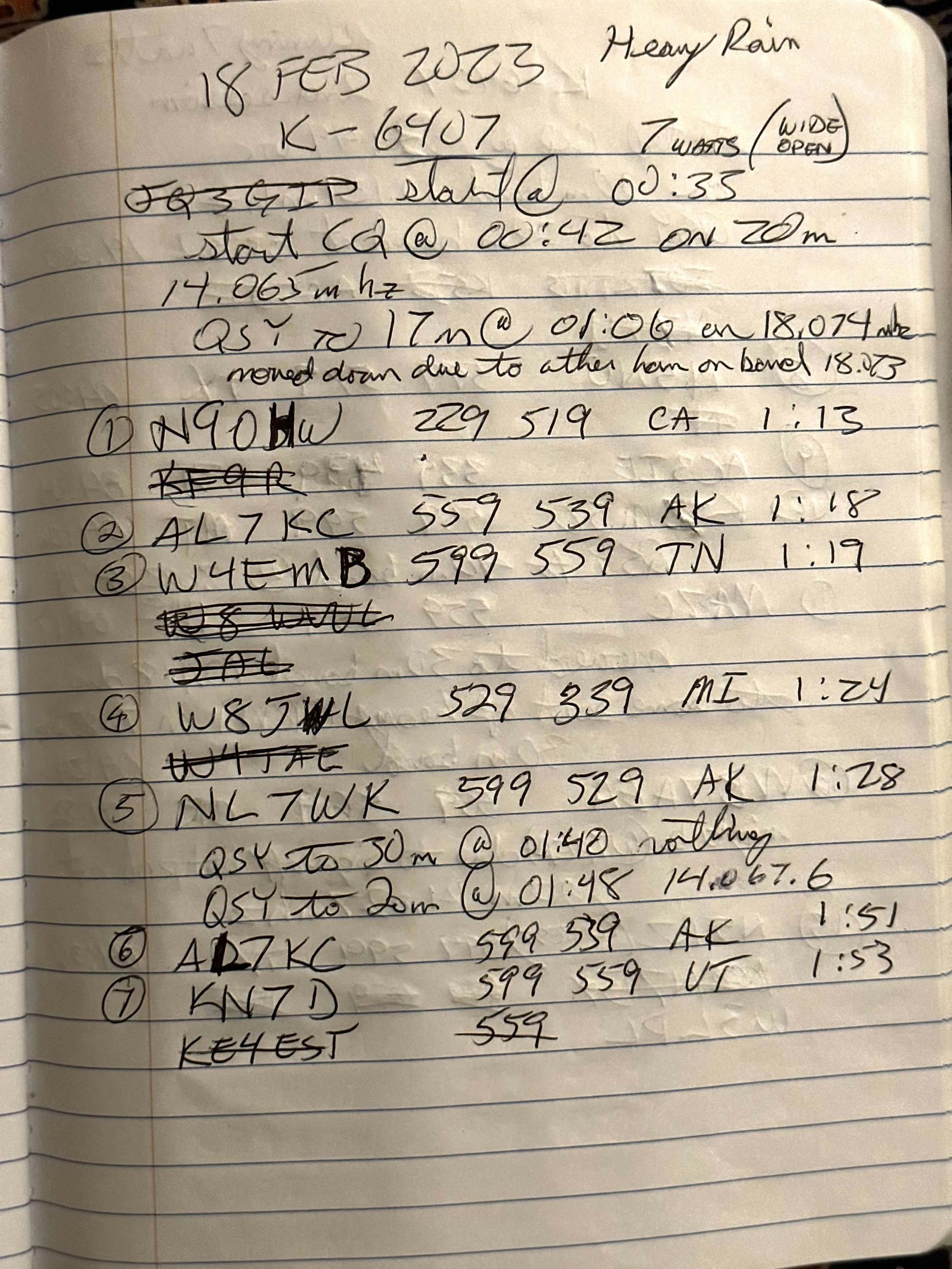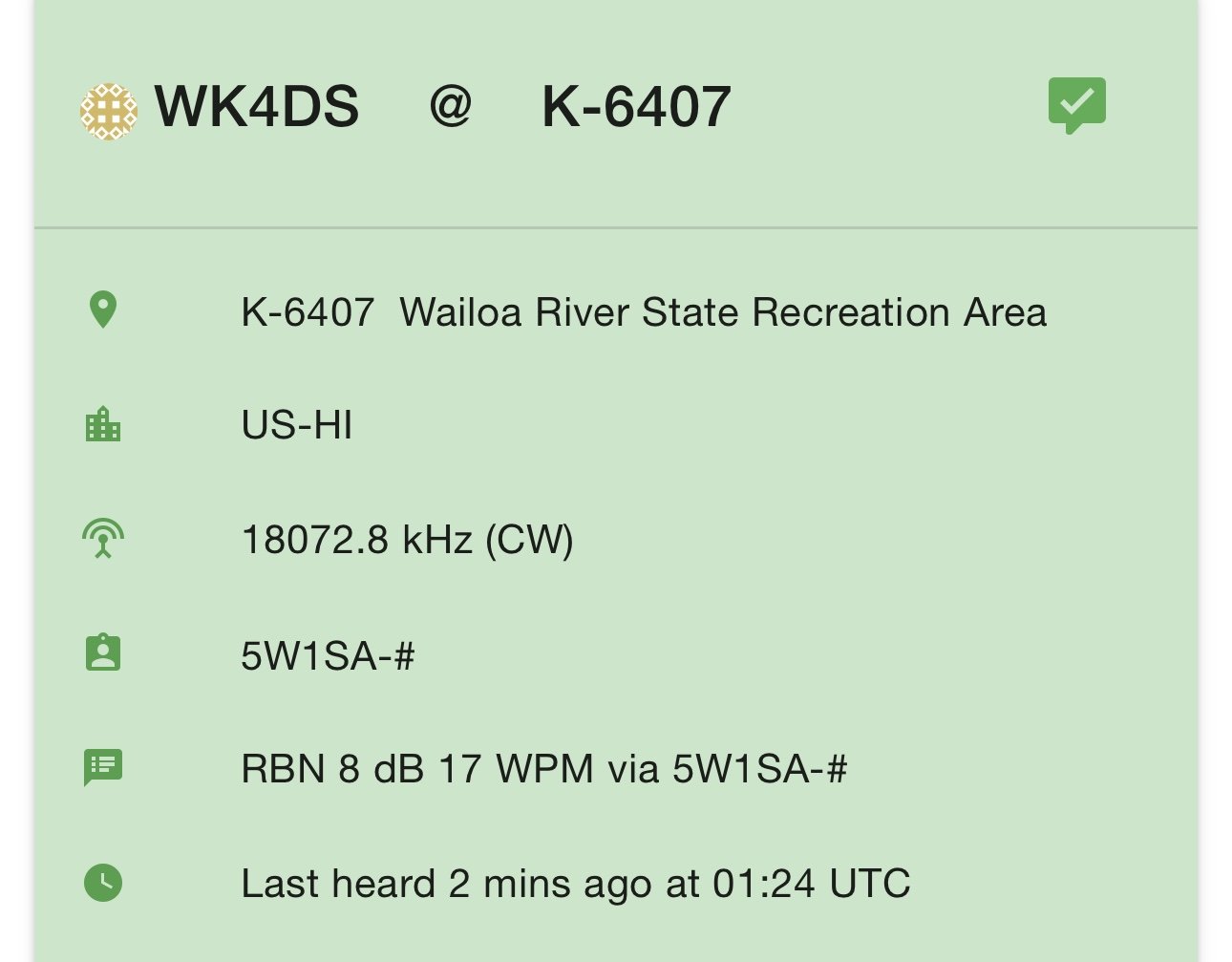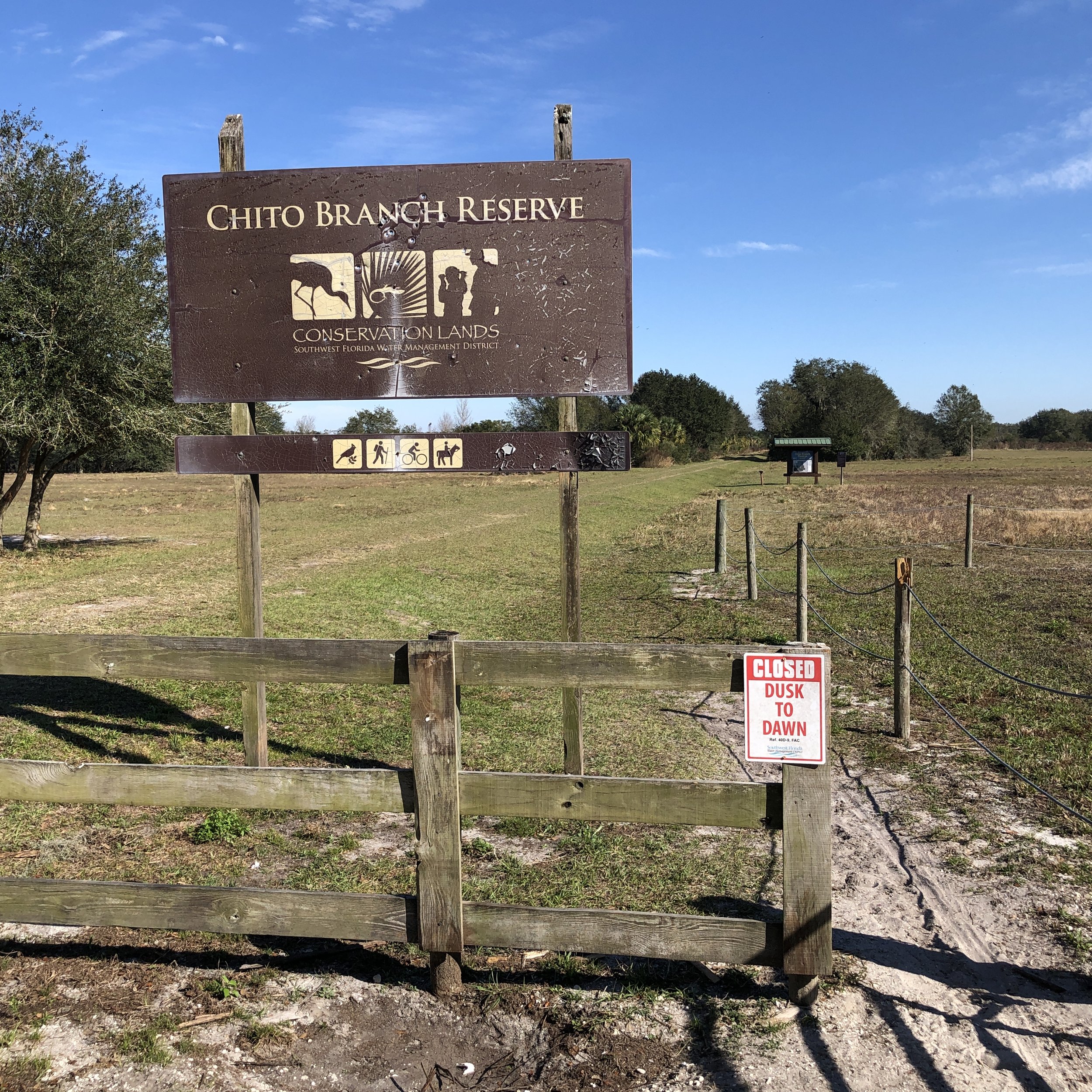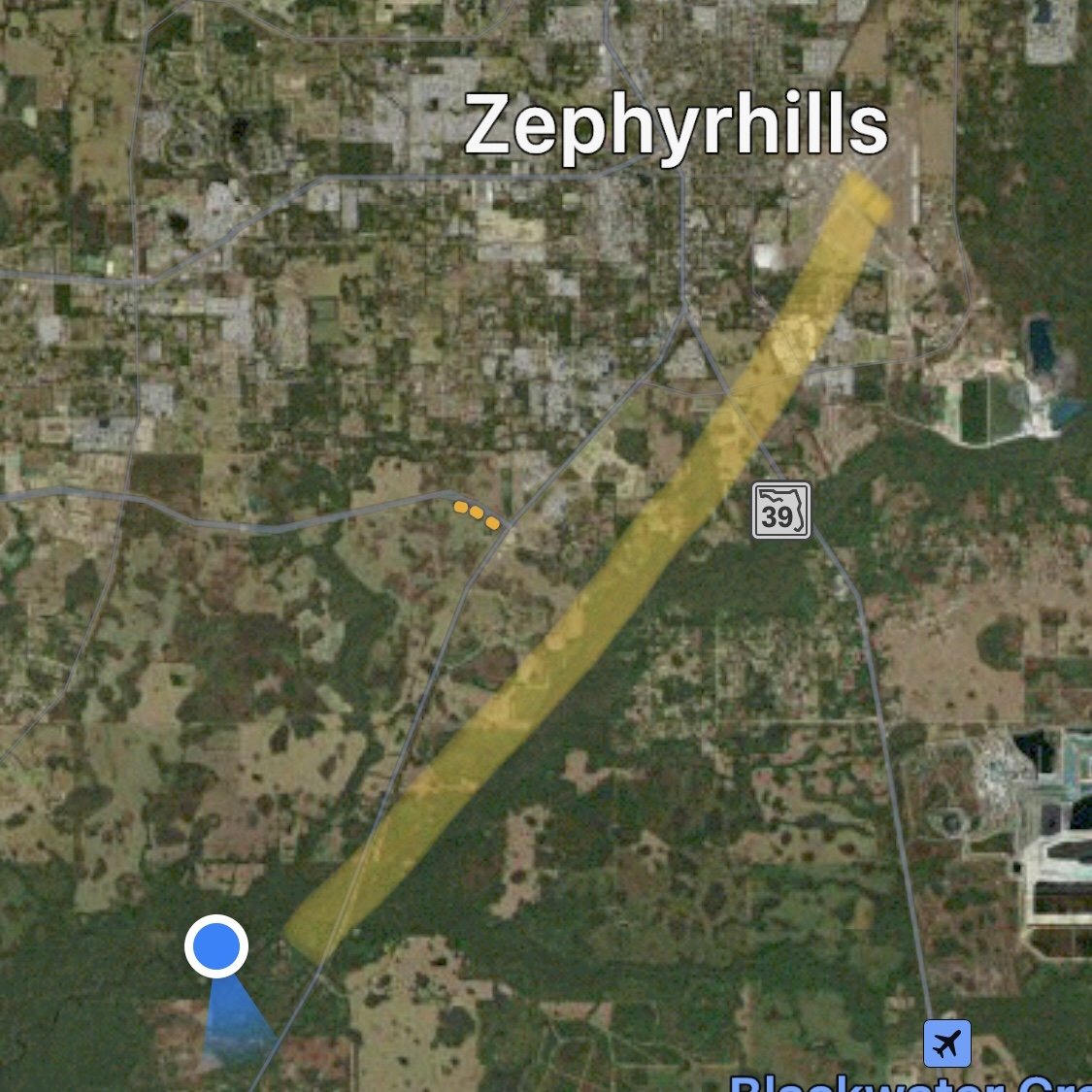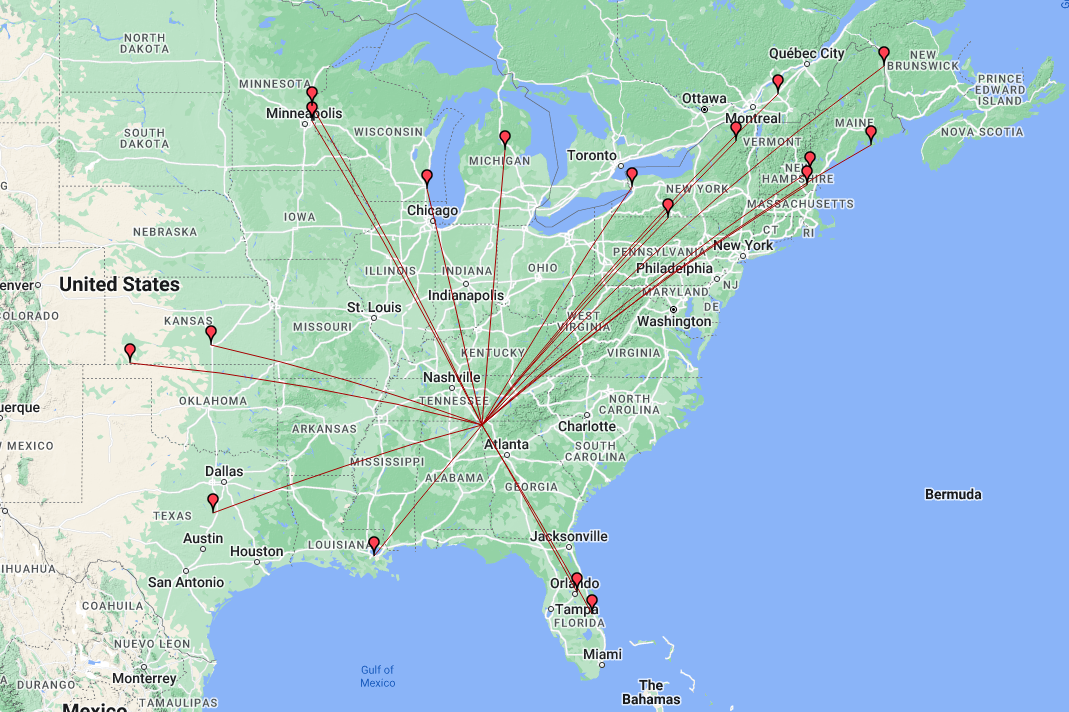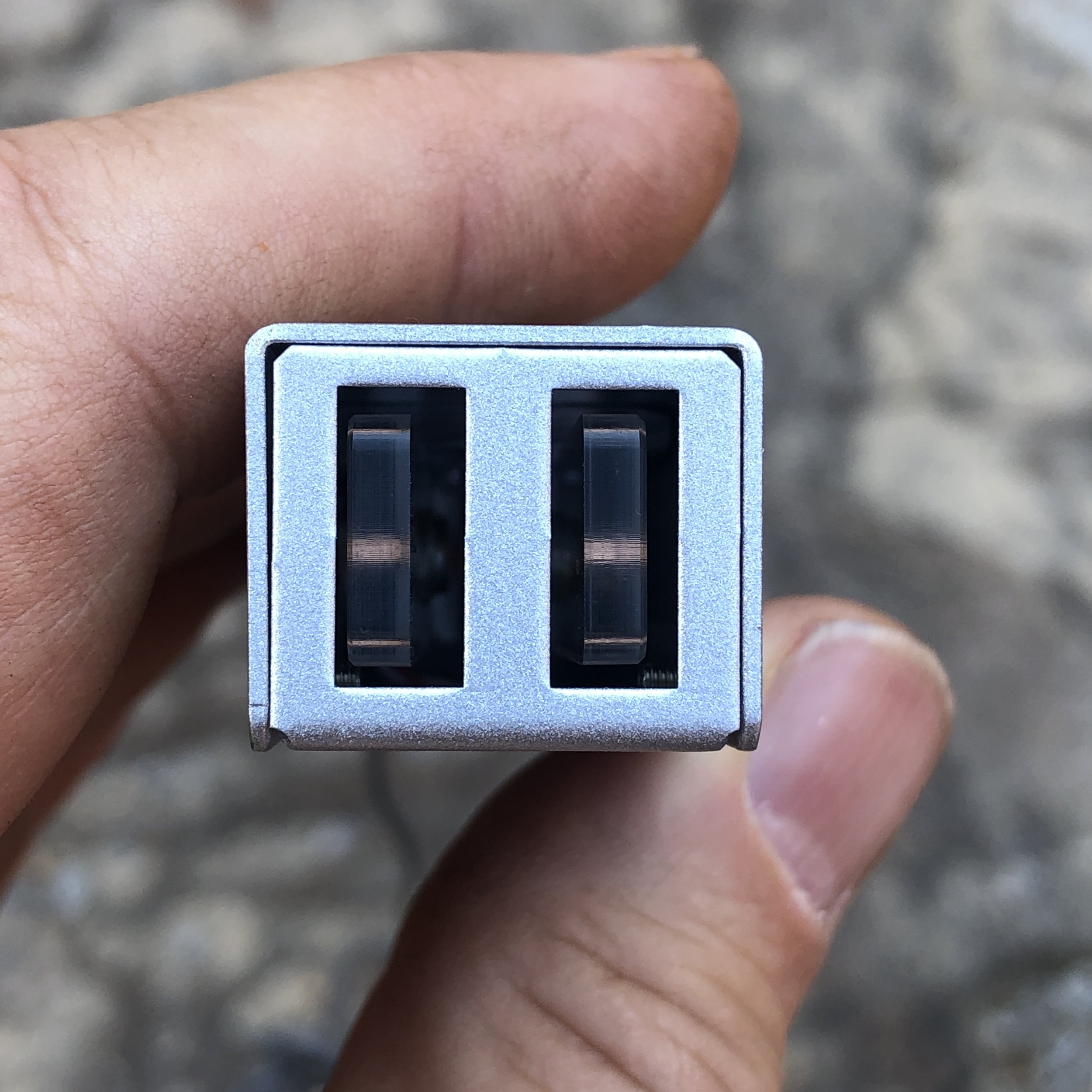I recently setup an activation at K-2169 and had no where to be for the rest of the day… This is my kind of POTA activation!
The above photo is a little misleading, there was one other car in the lot, but due to camera angle and me wanting the truck to be in the frame as well as the parking lot it is out of view. But it was essentially empty, so it was really quiet and I didnt even see a park ranger on this day, they normally ride by once or twice while I am setup and sometimes they even stop for a chat. I have been here so much that they know what I am doing and are cool with it. I contribute this to the fact that I am in a corner of the property where there is little to no activity most of the time, I don’t consume more than one parking space with my setup, I stay out of the pavilions (I have used them in the past if they were not being used and had no placard reserving them), my setup doesn’t involve me driving stakes into the ground and I do my best to keep my footprint to a minimum. Since I use CW for the most part, I don’t make very much noise either so it is minimal impact all around. At least that is my perspective and it seems that it is also the park employees perspective as well…or they could just not care about the old codger over there with the little radios…lol.
Today saw me on the 17 meter band with Morse code and it has always been an intriguing experience. The rhythmic sound of the dots and dashes echoing over the airwaves brings a sense of nostalgia for a bygone era while honing my skills in communication and technology. Despite the advancements in digital modes, Morse code offers a unique challenge that is both rewarding and intellectually stimulating. Operating on the 17 meter band allows for reliable long-distance communication, opening up a world of possibilities to connect with fellow enthusiasts from different corners of the globe. (Check the log and you will see what I mean by waxing nostalgic) It's fascinating to see how a simple yet effective mode like Morse code continues to thrive in the modern age of ham radio.
Below is the whole station (minus the S meter I am currently building for it) for the TR-35 HF radio. I have built the “black box” of options to help complete out the radio, the box has a battery pack in it as well as a speaker for the radio since it has no speaker of it’s own and I have added a push button to activate the voltmeter so it doesn’t run constantly and drain said battery. There is also a power port on the front now to allow the connection of two accessories as well. (This is for future expansion of the kit to include one more item that I wished this radio had built into it, an S meter)…
I created the box with the cabling to connect it to the Penntek TR-35 radio and it makes a station out of it basically. Just add your favorite CW key and you are off to the races.
I really like the layout of this radio, if I could alter the design at all, it would be to add two pushbuttons to send the CW memories with, but that is nitpicking to be honest. One other thing is that I like to have an S meter for some reason, it is fine to operate without it, but I just like having it for some reason… The system works well as it is and once you use it for literally a couple of minutes, it is easy to send the memories. If you are into small CW radios, this is one to have in my opinion…
Another thing I like about this radio is the fact that all the controls are on the surface that you need when operating. I like that it has the four knobs at the bottom and i usually use all four of them in an activation! Come to think of it, I usually use EVERY control on the radio on every outing… Everything you need and nothing you don’t…except for that S meter… HaHa. Another thing I like about this radio is the size. It is so small that it fits in my hand (for the most part) and is a 4 band CW transceiver! Even though it doesn’t have an antenna tuner, this is still a huge win for me. It sold me almost immediately when I took it to the field. That was when I realized I had found the replacement for the Elecraft K1 that I had used for so many years..
What your going to notice about today’s logbook page is that it doesn’t have very many calls in it. There is a couple of reasons for this. The first one is that the band was fading in and out pretty heavily. Just look at the time stamps on the RBN reports below and the associated the dB levels at those times, it was up and down heavily. Now I understand these stations are scattered around the country, but they are all west coast for the most part ( a feature of 17 meters is it skips over the closer states for me on my hamstick) and they show an amazing amount of variation in signal in just a few minutes of time. Once I looked at this, I realized I just needed to call and when the band would open up I would get two or three and then it would close back down, call a few minutes and get a couple more…rinse and repeat. It was still a lot of fun and I work Japan in one of the openings too!!!
Just check out that one lone DX contact from Japan! I was blown away when I heard his callsign coming into my tiny little radio. I love these kinds of days just as much as the faster paced, high QSO count days. It is just fun to setup a radio and make contact with distant stations whether in my own country or half way around the world.
Thank you for following along on my little journey to a local park, I hope it inspires you to get on the air and make contact with someone out there.
72 WK4Ds



































